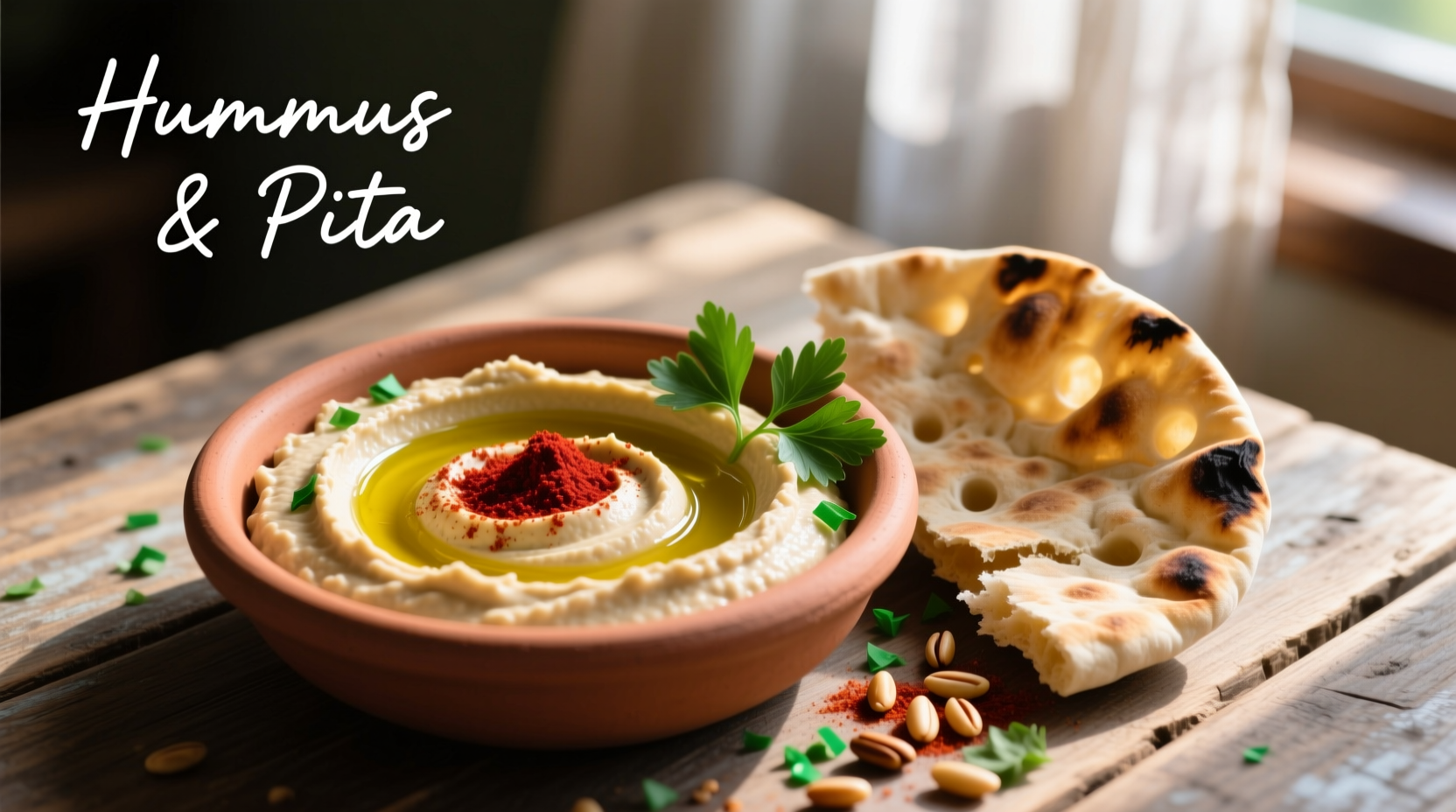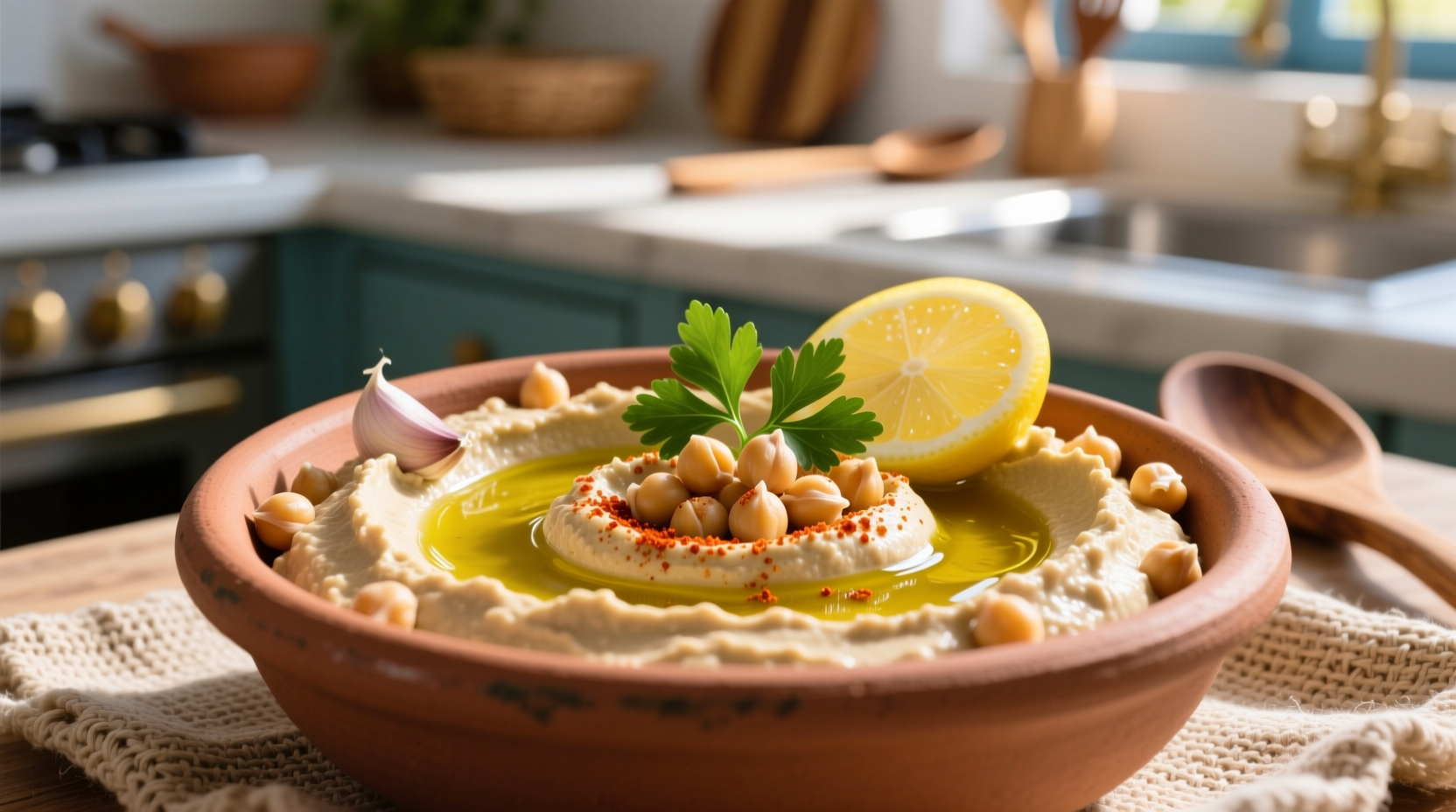Ever wondered what makes hummus so universally loved? Whether you're considering your first taste or trying to articulate its appeal to a friend, understanding hummus' distinctive flavor profile reveals why this ancient spread has become a global favorite. As someone who's documented traditional food preparations across the Mediterranean, I've experienced hummus in its most authentic forms - from bustling Tel Aviv markets to family kitchens in Beirut.
The Essential Flavor Components of Authentic Hummus
Traditional hummus delivers a harmonious blend of flavors that work together rather than competing. At its core, you'll experience:
- Creamy earthiness from properly prepared chickpeas
- Nutty richness provided by high-quality tahini (sesame paste)
- Bright acidity from freshly squeezed lemon juice
- Subtle pungency of garlic that enhances rather than dominates
- Delicate seasoning of salt and sometimes cumin
The magic happens in the balance. When prepared traditionally, no single ingredient shouts above the others. Instead, they create what culinary experts call a unified flavor profile - where the whole becomes greater than the sum of its parts. This balance explains why hummus works equally well as a standalone dip, sandwich spread, or accompaniment to grilled meats.

How Ingredients Shape Hummus Taste Experience
Each component contributes specific sensory elements that define hummus' distinctive character:
Chickpeas: The Earthy Foundation
Properly cooked chickpeas provide hummus' signature earthiness without beaniness. When prepared correctly (often with baking soda to soften skins), they create a smooth base that's mildly sweet with subtle nutty notes. The texture should be completely smooth - any graininess indicates underprocessed chickpeas that compromise both mouthfeel and flavor integration.
Tahini: The Nutty Heart
Fresh, high-quality tahini transforms hummus from bland to brilliant. Made from ground sesame seeds, it contributes:
- A rich, almost buttery mouthfeel
- Distinctive nutty flavor that's neither overwhelming nor subtle
- Natural bitterness that balances the lemon's acidity
As documented in culinary research from the American University of Beirut, tahini quality dramatically affects final taste. Rancid or low-quality tahini creates bitter, off-flavors that ruin otherwise well-prepared hummus.
Lemon and Garlic: The Brightening Elements
Fresh lemon juice provides essential acidity that cuts through the richness, while garlic adds complexity without dominating. The perfect hummus contains just enough garlic to be detectable but not sharp, and enough lemon to brighten without sourness. Temperature matters too - cold hummus served straight from the refrigerator mutes these delicate flavors.
Regional Variations and Their Distinct Flavor Profiles
Hummus isn't monolithic - regional differences create notable taste variations. Understanding these helps set proper expectations:
| Region | Key Flavor Characteristics | Distinguishing Ingredients |
|---|---|---|
| Lebanese | Extra smooth, subtle nuttiness | Higher tahini ratio, minimal garlic |
| Israeli | Brighter, more pronounced lemon | Fresh herbs, paprika topping |
| Palestinian | Richer, earthier profile | Extra virgin olive oil, cumin |
| American commercial | Milder, sometimes bland | Preservatives, stabilizers, less tahini |
This comparison reflects research from the Journal of Ethnic Foods documenting traditional preparation methods across the Eastern Mediterranean. The differences aren't just cultural preferences but reflect ingredient availability and historical preparation techniques passed down through generations.
What First-Time Tasters Should Expect
If you've never tried hummus, here's what to anticipate:
- Texture: Smooth and creamy, similar to thick yogurt or soft cheese spread
- Initial impression: Mildly nutty with subtle earthiness
- Middle notes: Gentle tang from lemon that refreshes rather than overwhelms
- Finish: Clean, slightly savory aftertaste that invites another bite
Temperature significantly affects perception - room temperature hummus reveals far more complexity than chilled versions. When served properly, good hummus has what food scientists call flavor layering, where different elements emerge sequentially rather than hitting all at once.
Common Misconceptions About Hummus Flavor
Several myths persist about hummus taste that deserve clarification:
- "Hummus tastes strongly of chickpeas" - Properly made hummus minimizes bean flavor through thorough processing and balancing ingredients
- "All hummus tastes the same" - Quality ingredients and preparation create dramatic taste differences
- "Hummus should be very garlicky" - Authentic preparations use garlic sparingly as a background note
- "Tahini makes hummus bitter" - Fresh tahini contributes pleasant nuttiness; bitterness indicates poor quality or rancidity
According to sensory analysis published by the International Society of Food Science and Technology, these misconceptions often stem from exposure to low-quality commercial versions rather than traditionally prepared hummus.
Maximizing Your Hummus Tasting Experience
To truly appreciate hummus' nuanced flavor profile:
- Serve at room temperature - Cold suppresses flavor complexity
- Use quality accompaniments - Fresh pita, crisp vegetables, or olives complement rather than compete
- Drizzle with extra virgin olive oil - Enhances mouthfeel and carries flavors
- Add finishing touches - A sprinkle of sumac or paprika can elevate specific flavor notes
Remember that freshness matters - homemade hummus typically tastes significantly better than store-bought versions due to the absence of preservatives and stabilizers that mute flavor. The difference is particularly noticeable in the brightness of lemon and complexity of tahini notes.
How Hummus Compares to Similar Spreads
Understanding hummus' unique position among dips helps contextualize its flavor:
- vs. Baba Ganoush: While both are Middle Eastern dips, baba ganoush features roasted eggplant for a smokier, more pronounced flavor
- vs. Bean Dips: Traditional bean dips often have stronger, more singular bean flavors without tahini's nuttiness
- vs. Tzatziki: The Greek yogurt-cucumber dip offers cool freshness rather than hummus' earthy richness
This contextual understanding helps explain why hummus serves as such a versatile culinary bridge - its balanced profile works across diverse applications where more assertive dips might overwhelm.
Final Thoughts on Hummus Flavor Appreciation
More than just a dip, hummus represents a culinary achievement in flavor balance. Its enduring popularity across cultures stems from that perfect equilibrium of earthy, nutty, tangy, and savory elements. When prepared traditionally with quality ingredients, hummus delivers a sophisticated flavor experience that's simultaneously comforting and complex.
Whether you're sampling your first taste or seeking to deepen your appreciation, approaching hummus with attention to its nuanced profile reveals why this ancient food continues to captivate palates worldwide. The next time you enjoy hummus, take a moment to identify each flavor layer - you'll discover new dimensions in this seemingly simple spread.











 浙公网安备
33010002000092号
浙公网安备
33010002000092号 浙B2-20120091-4
浙B2-20120091-4